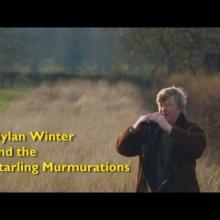

Join BirdNote tomorrow, November 30th!
Illustrator David Sibley and actor H. Jon Benjamin will face off in the bird illustration battle of the century during BirdNote's Year-end Celebration and Auction!
The searing cry of a Red-tailed Hawk pierces the air. The distinctive scream is coming from a tree nearby. But when you scan the tree for the form of a hawk, you see only a small, speckled, black bird. You’ve been fooled. It’s a starling giving voice to the hawk’s cry. The European Starling — the continent’s most abundant non-native bird — is an accomplished mimic. Starlings are especially astute imitators of bird sounds that have a whistled feel — like the sound of a Killdeer or quail. They can duplicate a car alarm or phone ring, too.
BirdNote®
Fooled by a Starling’s Mimicry
Written by Bob Sundstrom
This is BirdNote.
[Starling mimics of a Red-tailed Hawk cry]
As you step outside in late fall for a breath of fresh air, the searing cry of a Red-tailed Hawk pierces the air. [Cornell starling mimic of Red-tailed Hawk]
The distinctive scream is coming from a tree nearby. But when we scan the tree for the bulky form of large hawk, we see only a small, black bird. It tips its head back, opens its bill, and…[Cornell starling mimic of Red-tailed Hawk].
We’ve been fooled. It’s a starling giving voice to the hawk’s cry. In fact, the European Starling, the continent’s most abundant non-native bird, is an accomplished mimic. Starlings are especially astute imitators of bird sounds that have a whistled feel – like this sound of a Killdeer: [Killdeer call, http://macaulaylibrary.org/audio/191144, 0.08-.09]
and this quail: [Northern Bobwhite crow, http://macaulaylibrary.org/audio/196496, 0.08-.10]
European Starlings regularly incorporate both into bouts of singing. They can duplicate a car alarm or phone ring, too. [Phone-ringing starling mimics: https://www.youtube.com/watch?v=IDriW76zmxs]
What adaptive benefit might starlings gain from copying the sounds of other birds? A leading view argues that, by mimicking, a male starling adds to its song repertoire, making him just that much more attractive to the females than the next male on the branch.
So the next time you hear a Red-tail scream, double-check its author — especially if there are starlings nearby. [Red-tailed Hawk call, http://macaulaylibrary.org/audio/202280, 0.08-.09]
###
Sounds provided by The Macaulay Library of Natural Sounds at the Cornell Lab of Ornithology, Ithaca, New York.
Kildeer call [191144} recorded by W L Hershberger; Northern Bobwhite [196496] recorded by Bob McGuire; Red-tailed Hawk call [202280] recorded by J W McGowan. Starling mimicking a Red-tailed Hawk from: http://www.allaboutbirds.org/guide/European_Starling/sounds
BirdNote’s theme music was composed and played by Nancy Rumbel and John Kessler.
Producer: John Kessler
Executive Producer: Dominic Black
© 2015 / 2021 Tune In to Nature.org Narrator: Michael Stein
ID# EUST-04-2015-11-13EUST-04








